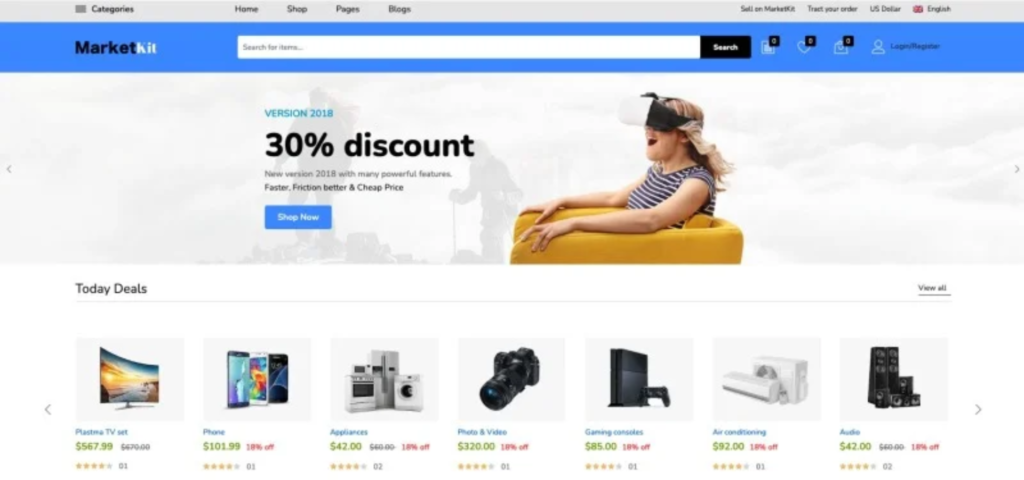An e-commerce website is an essential component of your business that links you with customers and reflects your brand in the digital age. It’s more than simply a place to sell things. A carefully thought-out and well-designed e-commerce website is essential for any new or old business wishing to grow online. From ideation to implementation, this article will walk you through the crucial processes of organizing and creating an e-commerce website. We’ll also introduce you to WebsiteBuilder.ai, a cutting-edge tool that uses artificial intelligence (AI) to simplify website creation
.1. Define Your Business Goals and Target Audience
Setting up an e-commerce website starts with defining your objectives. What goals do you have in mind? Are you trying to create brand awareness, boost sales, or offer a distinctive shopping experience? A clear understanding of your objectives will enable you to make wise choices throughout the design process.
Next, decide who your target market is. Who might be your target clientele? What are their requirements, annoyances, and preferences? You can adjust the operation and style of the website to your audience’s expectations by getting to know them.
2. Choose the Right Platform
It’s critical to choose the appropriate platform for your e-commerce website. It establishes the scalability, usability, and functioning of the website. There are several options available, ranging from cutting-edge systems like WebsiteBuilder.ai to more conventional platforms like Shopify and WooCommerce. WebsiteBuilder.ai provides a special benefit by streamlining the website construction process with artificial intelligence. Whether you’re a novice or a seasoned web designer, this platform offers user-friendly tools and capabilities to make creating a polished website simple.
3. Plan the Website Structure and Content
An easy-to-use website is dependent on its structure. Begin by delineating the primary components of your website, including the home page, product pages, contact information, about us, and blog. To make it easy for users to navigate through the site, arrange these sections properly in a sitemap.
Another important component of any website is its content. It has blog entries, pictures, videos, product information, and more. Not only does compelling material draw in readers, but it also aids with search engine optimization. Ensure that the content you write is succinct, clear, and consistent with your brand voice.
4. Design the User Interface (UI) and User Experience (UX)
Your e-commerce website should have a user-friendly and visually appealing design. Using hues, typefaces, and graphics that appeal to your target market, the user interface (UI) should represent the personality of your business.
The user experience as a whole, however, is the main focus of the UX. It entails making certain that the website is mobile-responsive, simple to use, and has a smooth checkout procedure. Using WebsiteBuilder.ai AI-powered design tools, which provide tailored recommendations based on your preferences and industry standards, you can quickly and easily develop a user-friendly design.
5. Implement Essential Features
A functional e-commerce website must have a few key components. Among them are:
Product Catalog: An orderly catalog featuring search capabilities, filters, and categories.
Shopping Cart and Checkout: An easy-to-use, safe checkout procedure featuring several payment choices.
User Accounts: Permit users to manage their profiles, keep track of orders, and establish new accounts.
Security: To safeguard client data, use SSL certificates and other security precautions.
Analytics: To monitor user behavior and improve your website, employ technologies such as Google Analytics.
6. Optimize for SEO and Performance
In order to increase organic traffic to your website, search engine optimization, or SEO, is essential. Make use of high-quality backlinks, meta tags, and pertinent keywords to increase your site’s search engine visibility. Fast loading times can be achieved by optimizing graphics and scripts, since site speed affects both SEO and user experience.
7. Test and Launch
Make sure everything functions as it should by thoroughly testing your website before launching it. Check the website’s operation, browser and device compatibility, and checkout process. When you’re certain that everything is set up correctly, it’s time to go live with your online store.
8. Monitor and Improve
Work continues even after the launch. Keep an eye on the functionality of your website, solicit user input, and make any required adjustments. Maintaining the relevance and competitiveness of your website requires regular upgrades and adjustments.
In summary
An e-commerce website’s planning and design require careful consideration of a number of elements, from identifying your target audience and goals to selecting the best platform and creating the user interface. Using cutting-edge tools such as WebsiteBuilder.ai, you may streamline the process and produce a well-designed, functional, and visually appealing website. You’ll be well on your way to building a strong internet presence for your company if you follow these guidelines.
